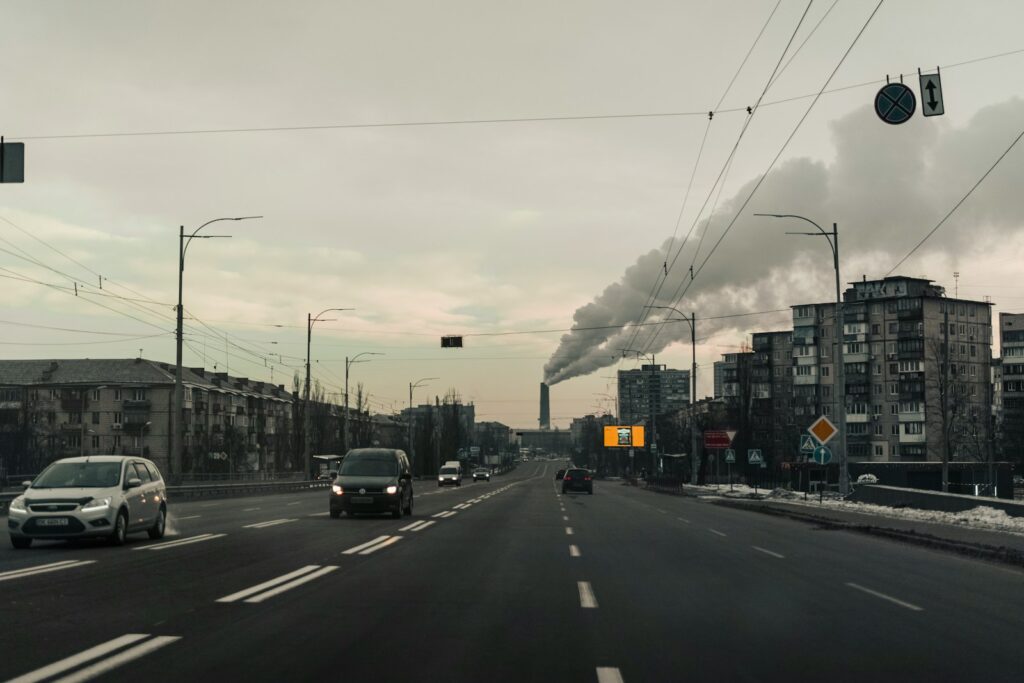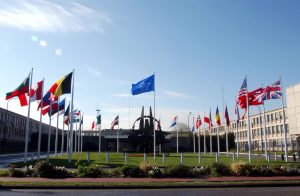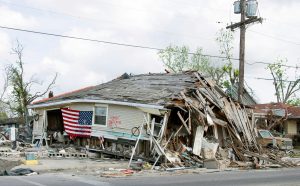Environmental Justice Explained: Why Polluted Neighborhoods Aren’t an Accident

Environmental justice, at first glance, may sound like one of a long list of progressive buzzwords devoid of real-life implications. That could not be more erroneous. More than just a word, it is a framework for understanding and addressing how environmental harms and benefits are distributed across communities. Environmental justice recognizes that the pollution burdens in society are not randomly assigned but systematically tied to race, class, and political power. We often think of contamination as a byproduct of industry that could happen anywhere, yet time and again, the communities living closest to toxic dumps, petrochemical plants, highways, and incinerators are overwhelmingly Black, Indigenous, Latino, or low-income. This is not because of coincidence or inherent differences among neighborhoods; it is the product of historical policies, economic decisions, and regulatory failures that allow some people to be exposed to hazards while others are protected.
Understanding why polluted neighborhoods persist requires us to look at the interplay between environmental racism and the social determinants of health. Environmental racism describes the ways in which communities of color are disproportionately exposed to environmental hazards, while the social determinants of health include access to clean air and water, healthy food, safe housing, and political representation. When these determinants are unequally distributed, environmental injustice follows. In this article, we will explore the history of environmental justice, the mechanisms that concentrate pollution in certain areas, the health and social impacts of those exposures, and the solutions that activists and policymakers are pursuing to ensure that no community is treated as disposable.
A Brief History of Environmental Justice
The environmental justice movement in the United States emerged from grassroots struggles in the 1980s, although its roots extend further back to civil rights campaigns and Indigenous land defense. One pivotal moment occurred in 1982 in Warren County, North Carolina, where the state planned to locate a hazardous waste landfill in a predominantly Black, rural community. Residents, church leaders, and civil rights activists organized protests, arguing that the state was using their county as a dumping ground for polychlorinated biphenyls (PCBs). The protest drew national attention and galvanized a broader conversation about environmental racism.
In 1991, the First National People of Color Environmental Leadership Summit in Washington, D.C., codified principles of environmental justice that emphasized the right to a clean and safe environment, community participation in decision-making, and the importance of cultural and land rights. In 1994, President Bill Clinton issued Executive Order 12898, directing federal agencies to identify and address disproportionately high and adverse health or environmental effects of their actions on minority and low-income populations. This was a milestone for integrating environmental justice into federal policy, yet implementation has been uneven.
The movement’s history also includes Indigenous struggles against extractive industries on tribal lands, fights against urban highway construction that destroyed communities of color, and labor movements advocating for safe working conditions. Across these battles, the common thread is that pollution and degradation often follow the paths of least political resistance, landing where people have been historically marginalized. Recognizing this pattern as the result of systemic forces, rather than random chance, is the first step toward meaningful solutions.
Environmental Racism and the Role of Policy
Environmental racism is the term used to describe the disproportionate impact of environmental hazards on people of color. It underscores that racism is embedded in the policies and practices that designate certain communities for hazardous waste facilities, landfills, and other polluting industries. These decisions are often justified by claims that such locations are economically efficient or that the land is cheaper, but the underlying assumption is that the well-being of certain populations is less valuable.
One mechanism that drives environmental racism is zoning and land-use planning. Municipalities often zone industrial activities in or near low-income neighborhoods, which tend to be home to people of color due to historic segregation and redlining. Once a neighborhood hosts one polluting facility, it becomes easier for regulators to justify additional permits under the logic that the area is already industrial. This process, called cumulation, results in neighborhoods becoming sacrifice zones where toxic exposures accumulate over time.
Another factor is unequal political representation. Communities with less political clout struggle to influence public hearings and permitting processes. They may lack access to legal resources or have language barriers that prevent them from understanding complex environmental documents. Consequently, companies face less resistance when selecting sites in these areas. Regulatory agencies also engage in disparate enforcement, applying less stringent oversight and lower fines in poor neighborhoods than in affluent ones. This creates a two-tiered system of environmental protection.
Economic incentives also play a role. Land costs are lower in marginalized areas, and local governments may offer tax breaks or other incentives to attract industry in hopes of creating jobs. However, the jobs that materialize may be dangerous, low-paid, or temporary, and the health costs borne by residents can outweigh economic benefits. When pollution reduces property values, wealthier residents move out, further entrenching segregation. Through this feedback loop, environmental racism perpetuates and intensifies.
Health Impacts and Social Costs
The consequences of living in a polluted neighborhood are profound and multifaceted. Proximity to major highways, industrial facilities, and waste sites exposes residents to fine particulate matter (PM2.5), nitrogen oxides, sulfur dioxide, volatile organic compounds, and other pollutants. These exposures are linked to asthma, chronic obstructive pulmonary disease, cardiovascular disease, preterm birth, and low birth weight. Children living near busy roads have higher rates of asthma and impaired lung development. Adults face elevated risks of heart attacks and strokes. Pollutants like benzene and dioxins are known carcinogens, increasing the risk of cancers such as leukemia and liver cancer.
Exposure to lead in soil and paint, arsenic in water, or mercury in fish can cause neurodevelopmental problems, especially in infants and children. The contamination of drinking water in Flint, Michigan, which exposed thousands of residents to lead, is a notorious example of environmental injustice with long-term health implications. In St. John the Baptist Parish in Louisiana’s Cancer Alley, residents live near petrochemical plants and have some of the highest cancer rates in the country. These health burdens are not isolated incidents; they reflect a pattern of communities being deemed acceptable receptacles for pollution.
Environmental injustice also has social and economic costs. People living in polluted areas often have fewer opportunities to engage in outdoor activities, reducing physical activity and exacerbating chronic disease. Schools near industrial zones may struggle to retain teachers and provide quality education, perpetuating educational disparities. Health issues can lead to absenteeism and reduced productivity, affecting household income. When property values are depressed due to contamination, families cannot build wealth through home ownership, perpetuating the racial wealth gap. These cumulative impacts illustrate that environmental injustice is not just a health issue but a barrier to social mobility and equity.
Climate Change: A New Layer of Inequity
Climate change adds urgency to the environmental justice conversation. Extreme heat waves, flooding, hurricanes, and wildfires do not affect all communities equally. Urban heat islands—areas where built infrastructure and lack of greenery cause higher temperatures—are often found in neighborhoods that were redlined in the mid-20th century. These historically disinvested areas can experience temperatures several degrees higher than wealthier neighborhoods, leading to increased heat-related illnesses and deaths. Residents may lack access to air conditioning or cannot afford the energy costs of cooling.
Similarly, rising sea levels and more intense storms disproportionately impact coastal communities where lower-income populations live in flood-prone housing. The devastation of Hurricane Katrina in New Orleans and Hurricane Maria in Puerto Rico highlighted how inadequate infrastructure, poverty, and systemic neglect amplify the human toll of natural disasters. Climate-driven disasters can lead to long-term displacement, breaking up social networks and disrupting cultural ties.
Furthermore, climate mitigation policies can have unintended consequences if not designed with justice in mind. For example, cap-and-trade programs that allow companies to trade pollution credits may reduce overall greenhouse gas emissions but can result in continued or even increased co-pollutant emissions in certain neighborhoods. Advocates argue that policies must incorporate co-benefits—like improving local air quality and creating green jobs in underserved communities—to ensure that decarbonization does not perpetuate environmental injustice.
Policy Solutions and Community Actions
Addressing environmental injustice requires comprehensive policy and grassroots approaches. At the federal level, expanding and enforcing civil rights laws such as Title VI of the Civil Rights Act—which prohibits discrimination in programs receiving federal funds—can provide legal avenues for affected communities. Agencies must also conduct cumulative impact assessments that consider the aggregate pollution burden when permitting new facilities, rather than evaluating each source in isolation. The Environmental Protection Agency (EPA) could adopt rules that limit permits in already overburdened communities.
States and municipalities can develop environmental justice screening tools like California’s CalEnviroScreen or New Jersey’s Environmental Justice Law, which require regulators to deny permits if they would add to the cumulative burden in designated environmental justice communities. Such tools make environmental data accessible and empower residents to hold decision-makers accountable. Governments should also invest in infrastructure improvements, such as replacing lead pipes, remediating contaminated sites, and increasing green spaces to mitigate urban heat.
Community engagement is essential. Successful environmental justice campaigns often begin at the grassroots level, with residents documenting pollution, organizing protests, and partnering with scientists and lawyers. Community-based participatory research allows residents to gather data on air quality or health outcomes, strengthening their case for intervention. Local advisory boards, citizen science projects, and community benefits agreements can ensure that residents have a voice in development decisions. Moreover, supporting workers’ rights in polluting industries helps address the intersection of labor and environmental justice.
Philanthropic and private-sector partners also have roles to play. Companies can adopt equitable siting practices, invest in clean technologies, and engage with communities early in planning processes. Corporate accountability measures—like requiring industries to fund health clinics or green infrastructure in host communities—can help mitigate harm. However, corporate actions must not be substitutes for robust public regulation.
Success Stories and Continued Challenges
There are notable successes where communities have fought polluting industries and won. Residents of Chester, Pennsylvania, a city once dubbed “the largest collection of waste facilities in the nation,” organized against an incinerator that was emitting toxins. Their efforts contributed to stricter regulations and the closure of some facilities. In Los Angeles, community organizations successfully pushed for the shutdown of the Exide Technologies battery recycling plant, which had contaminated nearby neighborhoods with lead and arsenic. These victories demonstrate the power of organized communities to influence policy and protect public health.
At the same time, environmental justice remains an ongoing struggle. Many communities lack the resources to sustain long-term legal battles. Regulatory agencies often operate with limited budgets and may face political pressure that weakens enforcement. Emerging issues like fracking, pipeline construction, and mining for battery materials pose new environmental justice dilemmas. As the economy transitions to renewable energy and electric vehicles, ensuring that the benefits and burdens of new infrastructure do not reproduce past injustices is paramount.
Conclusion: Toward a Just Future
Environmental justice challenges us to recognize that polluted neighborhoods are not an accident but a consequence of systemic inequality, historical decisions, and ongoing neglect. When environmental racism intersects with socio-economic disparities, entire communities are put at risk. The health burdens, economic costs, and social harms are profound and intergenerational. To build a just future, we must incorporate environmental justice principles into policy, planning, research, and community development. This means prioritizing the needs of the most vulnerable, engaging those affected in decision-making, and ensuring that environmental benefits—clean air, water, green spaces—are shared equitably. Only by acknowledging the roots of environmental injustice can we dismantle the structures that perpetuate it and create a world where all communities can thrive.
Finally, environmental justice is not only about stopping pollution; it also means creating resilient systems and regenerative economies. Communities on the frontlines of pollution often develop innovative solutions such as community-owned renewable energy, urban gardens, and cooperative businesses that keep resources circulating locally. Recognizing and investing in these efforts can transform environmental justice from a struggle against harm to a celebration of healing and empowerment.
As readers, we can support environmental justice by amplifying the voices of affected communities, advocating for fair policies, and examining our own consumption patterns. We can join local organizations, attend public hearings, and vote for leaders committed to equity and sustainability. Environmental justice is everyone’s issue, because the health of our planet and its people are inseparable.



